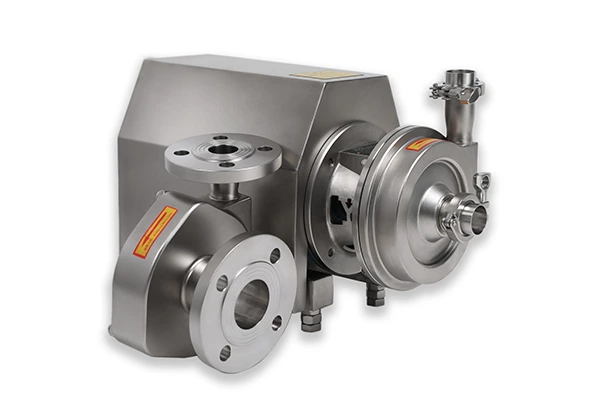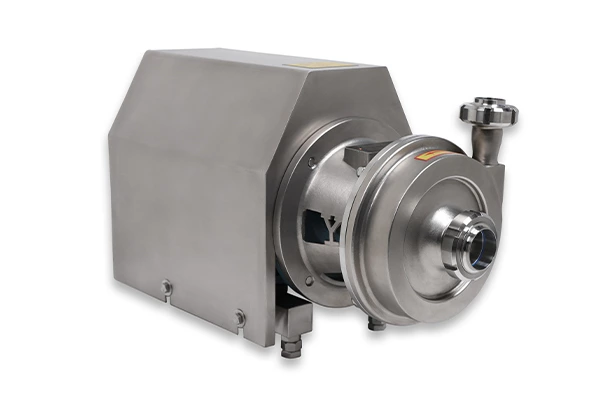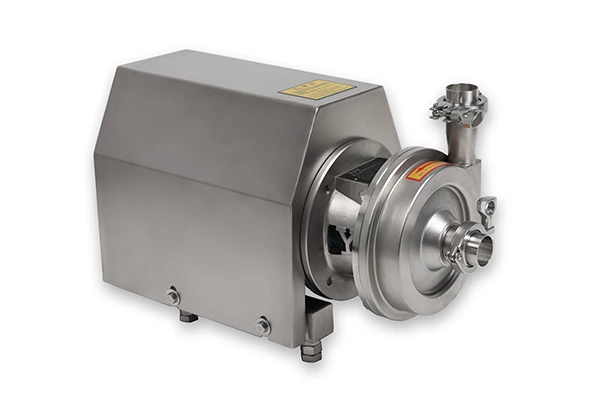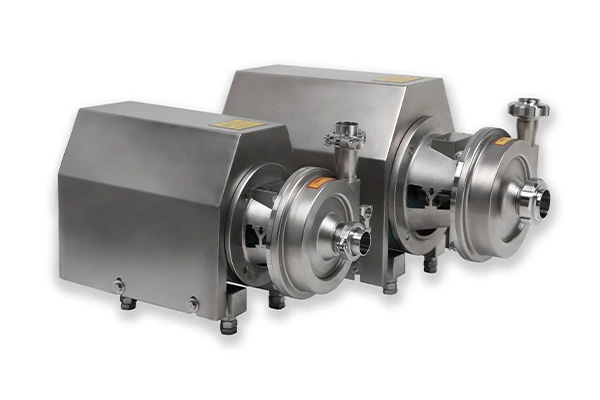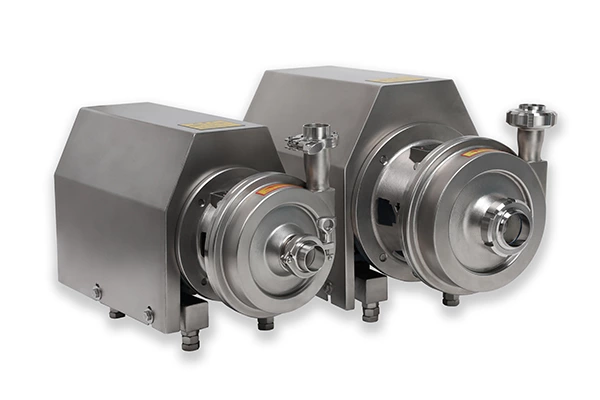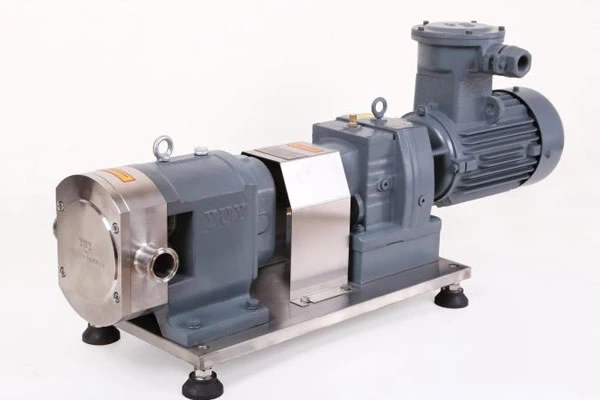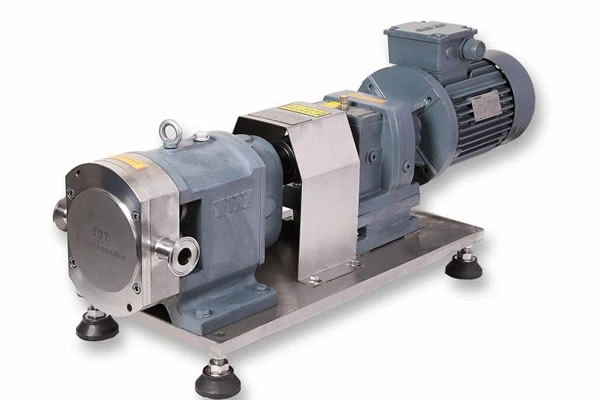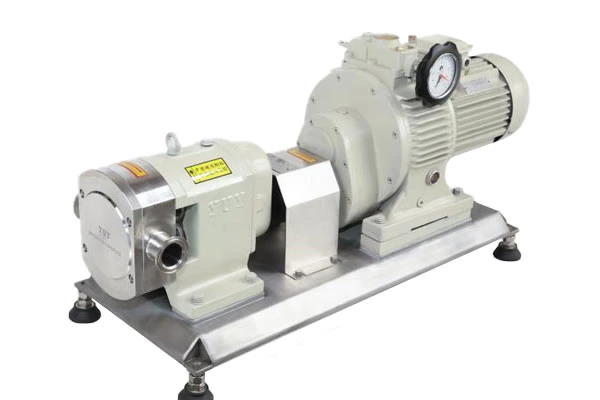Sanitary Centrifugal Pump Troubleshooting
Sanitary Centrifugal Pump is a new type of conveying machinery, which uses compressed air as the power source. It can completely pump out all kinds of corrosive liquids, liquids with particles, high viscosity, volatile, flammable and highly toxic liquids.
Troubleshooting of sanitary centrifugal pumps
1. Before disassembling the sanitary centrifugal pump, mark the air chamber and liquid chamber on the left and right sides to facilitate the subsequent reassembly.
2. Use a wrench to loosen the small clamp connecting the outlet pipe and the liquid chamber. After removing the outlet pipe, you can see the valve ball and valve seat. Take out the ball and seat and check other spare parts of the pump for wear, chemical corrosion, cracks, etc.
3. Use a wrench to loosen the small clamp connecting the inlet pipe and the liquid chamber. After removing the outlet pipe, you can see the valve ball and valve seat. Take out the ball and seat and check other spare parts of the pump for wear, chemical corrosion, cracks, etc.
4. Use a wrench to separate the liquid chamber and the intermediate body of the pump. After removing the liquid chamber, you can see the diaphragm and diaphragm clamp.
5. Use a tool or wrench to fix the left and right edges of the outer clamp of the diaphragm, and separate the diaphragm device from the intermediate body. Then rotate clockwise to loosen the diaphragm device. After removing the outer clamp of the diaphragm, remove the shaft from the intermediate body.
6. Use pliers (with wooden pads) to separate the shaft from the diaphragm device, and check whether the shaft, clamp, and diaphragm are damaged and corroded.
7. Install from step 6 to step 1
The sanitary centrifugal pump is in motion, but the flow rate is small or there is no liquid flowing out at all:
1. Check the cavitation phenomenon of the pump, reduce the speed of the pump to allow the liquid to enter the liquid chamber.
2. Check whether the valve ball is stuck. If the operating liquid is incompatible with the elastomer of the pump, the elastomer will swell. Please replace the elastomer with an appropriate material.
3. Check whether the joint at the pump inlet is completely locked and leak-proof, especially the clamp near the valve ball at the inlet end needs to be locked.
The air valve of the pump is frozen:
Check whether the water content of the compressed air is too high, and install air drying equipment
Bubbles are generated at the outlet of the pump:
Check whether the diaphragm is broken, check whether the clamps are locked, especially the inlet pipe clamp.
The product flows out from the air discharge port:
Check whether the diaphragm is broken, and check whether the diaphragm and the inner and outer clamps are clamped on the shaft
The valve makes a creaking sound: increase the outlet or inlet head.
Pump disassembly and reassembly guide:
Warning: Before repairing the sanitary centrifugal pump, the air source piping must be removed from the sanitary centrifugal pump and the air pressure in the sanitary centrifugal pump must be discharged. Remove all pipelines connecting the inlet and outlet of the sanitary centrifugal pump, and then discharge the fluid in the pump into a suitable container. Wear protective caps, glasses, and gloves
The pump does not move or operates very slowly:
1. Check whether the filter screen or air filter device at the air inlet end has impurities.
2. Check whether the air valve is stuck and clean the air valve with cleaning fluid.
3. Check whether the air valve is worn and replace new parts if necessary.
4. Check the condition of the sealing parts of the center body. If they are severely worn, the sealing effect cannot be achieved and the air will be exhausted from the air outlet. Due to its special structure, please only use GLYD rings.
5. Check whether the piston movement in the air valve is normal.
6. Check the type of lubricant. If the viscosity of the added lubricant is higher than the recommended oil, the piston may be stuck or operate abnormally. It is recommended to use a light and antifreeze lubricant. (ISO grade 15/5WT antifreeze oil)
